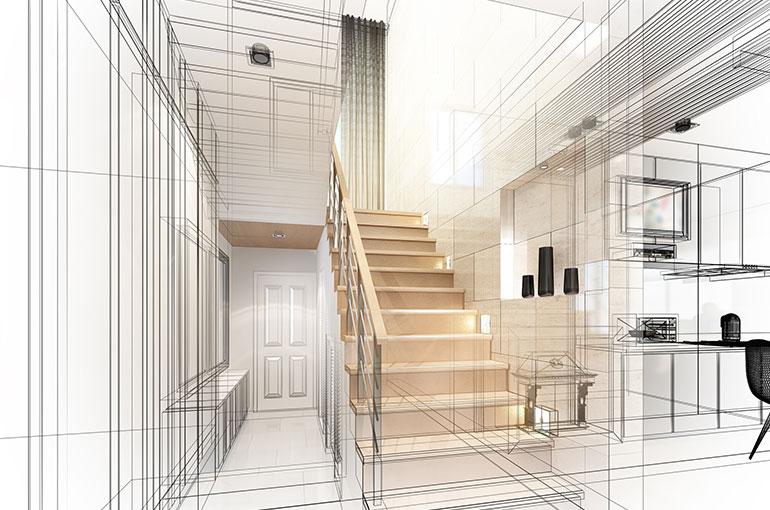A Comprehensive Overview of Architectural Styles and Their Influence on Modern City Planning and Development
Architectural designs have long offered as a mirror to the societal worths and technical improvements of their time, playing an important role in forming modern city planning and growth. From the magnificence of Neoclassicism to the utilitarian strategy of Brutalism, each style has actually presented unique ideas that influence metropolitan aesthetic appeals and functionality.
Historic Review of Architectural Styles
Throughout history, building styles have actually developed in reaction to social, technical, and ecological elements. Each period shows the prevailing values, beliefs, and developments of its time, bring about an abundant tapestry of design that indicates human imagination and adjustment. The ancient worlds, such as the Egyptians and Greeks, developed foundational styles that stressed proportion and percentage, offering both functional and aesthetic functions.
As societies transitioned through the Middle Ages, Gothic design arised, defined by its verticality and complex detailing, matching the spiritual aspirations of the era. The Renaissance marked a revival of classical ideals, merging art and architecture in cutting-edge ways that affected succeeding styles throughout Europe.
The Industrial Change presented brand-new materials and building and construction techniques, prompting movements like Modernism, which tested typical kinds and accepted simplicity and functionality. The 20th century saw a diversity of styles, with Postmodernism responding versus the stark minimalism of its predecessor, incorporating historical references and eclectic aspects.
Today, building designs remain to evolve, driven by globalization and sustainability worries, showing a vibrant interaction between heritage and advancement. This historic summary highlights the significance of style as a mirror of societal advancement and as a catalyst for urban development.
Trick Architectural Styles Explained
The variety of building styles reflects the myriad influences that form our constructed atmosphere, each symbolizing distinct characteristics and cultural values. Trick building styles consist of Classic, Gothic, Baroque, Modernism, and Postmodernism, each representing distinct historical contexts and aesthetic ideologies.
Classical style, rooted in ancient Greece and Rome, emphasizes symmetry, proportion, and using columns. In contrast, Gothic design, thriving in the Center Ages, is identified by pointed arches, ribbed safes, and flying buttresses, creating a heavenly high quality in basilicas. Baroque style, emerging in the 17th century, is noted by splendour, fancy decoration, and a vibrant interaction of light and darkness.

Recognizing these designs supplies understanding right into the cultural stories and technical improvements of their corresponding periods, highlighting how architecture offers not just as a shelter, yet as a representation of societal values and desires.
Effect on Urban Preparation
In forming the growth of cities, architectural designs substantially influence metropolitan preparation decisions. The choice of architectural style typically determines the appearances, capability, and total personality of metropolitan settings.
Moreover, building designs can affect zoning laws and land utilize plans. Urban coordinators have to think about the prevailing building trends when developing areas, ensuring that brand-new advancements balance with existing frameworks. This factor to consider fosters cohesive urban landscapes and improves community identification.
The execution of particular building why not try these out designs can also affect socioeconomic aspects within a city. As an example, premium contemporary layouts may attract upscale citizens and companies, causing gentrification, while much more economical housing solutions might prioritize sensible and sustainable designs to suit diverse populations. Ultimately, the interaction in between building styles and urban planning develops vibrant cities that mirror both historic context and contemporary needs, shaping the lived experiences of their citizens.
Sustainability and Modern Style
Building styles play a critical role in addressing modern obstacles, especially in the realm of sustainability. As urban locations broaden and environmental concerns escalate, modern-day design progressively embraces lasting style principles that focus on energy efficiency, source conservation, and very little ecological influence.
Contemporary building movements, such as biophilic layout and environment-friendly style, advocate for frameworks that harmonize with their surroundings, utilizing natural products and advertising biodiversity - cda architects. These styles usually Our site incorporate sustainable power resources, such as solar panels and wind generators, to lower dependence on fossil gas and reduced carbon impacts
Furthermore, the integration of innovative innovations, such as clever building systems, enhances power monitoring, optimizing resource use while ensuring occupant comfort. Ingenious water administration approaches, consisting of rain harvesting and greywater recycling, more contribute to sustainable urban settings.
Notably, sustainability expands past environmental worries; it incorporates social and economic dimensions. By cultivating area well-being and promoting inclusivity, modern-day building styles align with sustainable advancement objectives. Consequently, the development of building techniques remains to shape resilient cities that not only satisfy the demands of the here and now but also protect the future for generations to find.
Area Involvement in Layout
Area involvement in layout acts as a vital bridge in between engineers and the populaces they offer, ensuring that the built environment reflects the needs and aspirations of its users. This joint procedure welcomes area participants to add their understandings and choices, cultivating a feeling of possession and responsibility toward the spaces they occupy.
Reliable area involvement uses different techniques, such as workshops, surveys, and public online forums, to gather varied perspectives (cda architects). These strategies facilitate a two-way dialogue, enabling engineers to understand neighborhood contexts while empowering locals to voice their worries and wishes. This inclusivity not just enhances the layout high quality however additionally promotes social equity by addressing the unique difficulties faced by marginalized teams

Final Thought
Building designs have actually exceptionally affected contemporary city preparation and advancement, showing progressing social and technological contexts. The combination of historical appearances with modern demands cultivates city settings that focus on sustainability and neighborhood interaction. As cities continue to grow and adjust, the ongoing dialogue in between building heritage and modern-day style principles will remain essential in developing comprehensive, lively areas that enhance lifestyle and advertise social equity. The future of metropolitan advancement depend upon this unified equilibrium.